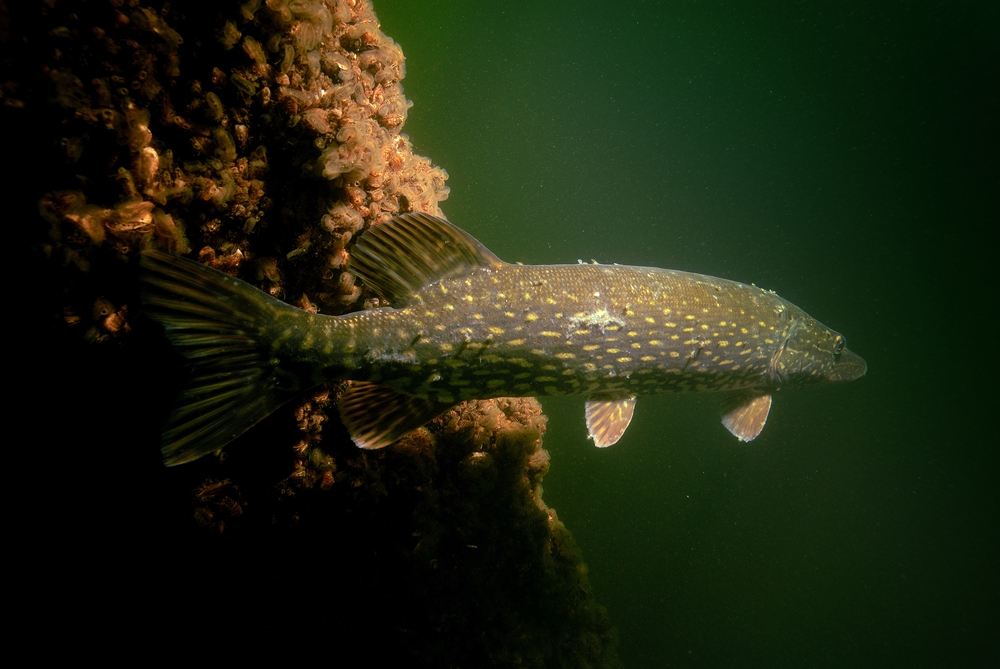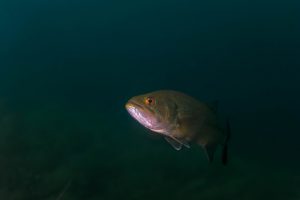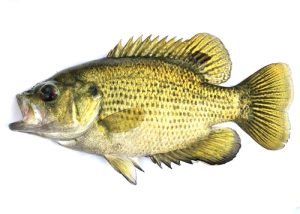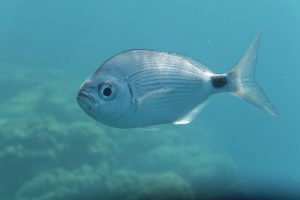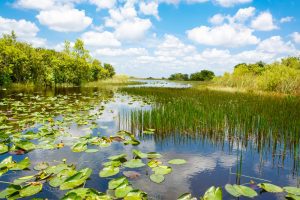The Northern freshwater pike is an aggressive fish with a long body that waits on the bottom for its prey to pass by before quickly snatching them up.
The muskellunge Esox masquinongy, commonly referred to as a “musky” or “muskie,” is the biggest species of pike native to large rivers in North America.
The world’s largest fish, according to the Guinness Book of World Records, was 5 feet 3½ inches (161.29 cm) long when it was caught.
As recognized by the International Game Fish Association, (IGFA) Louie Spray caught it in the Chippewa Flowage near Hayward in Wisconsin on July 24, 1949, with a weight of 67.483 pounds (30.61 kilograms).
A Muskie can reach a maximum length of 1.8 meters and a maximum weight of 32 kilograms (but it is more often between 0.71 and 1.22 meters long) (but typically between 6.8 and 16.3 kg).
Furthermore, claims of lengths up to 2.44 m have been made, although no formal verification has ever been made.
Table of Contents
What is the origin of the name “Muskellunge”?
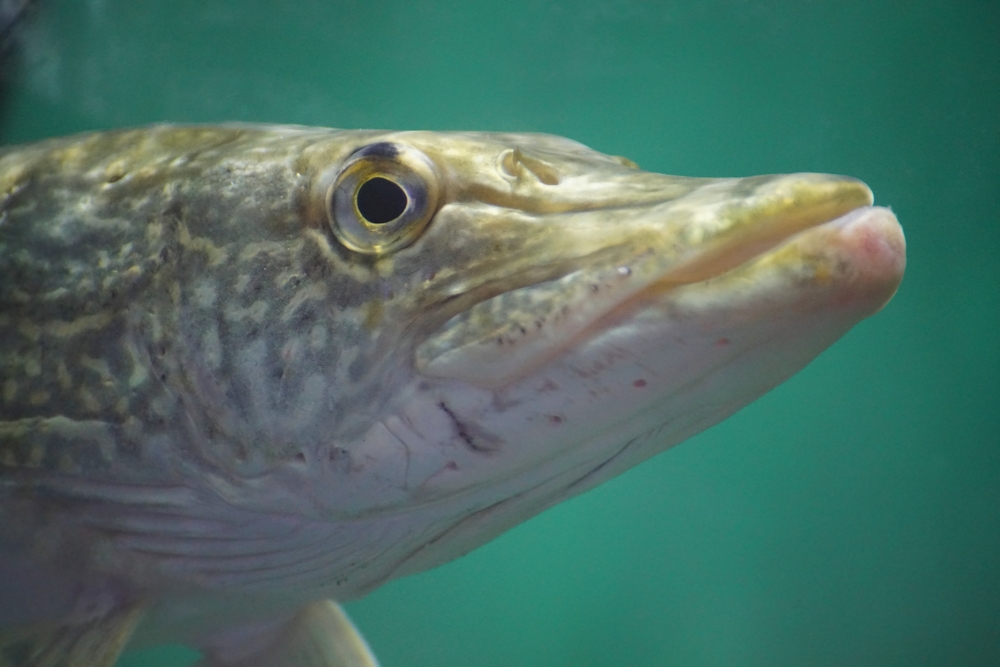
The Ojibwe term “maashkinoozhe,” which means “ugly pike,” is thought to have given rise to the unique name “muskellunge.”
Pike, like all predatory fish, hunt using ambush techniques by hiding in foliage or rock outcrops.
Pike attack unsuspecting prey as they get closer, shocking them with their sudden appearance.
Fisheries, aquatic animals like ducklings, plus large freshwater crustaceans like crayfish are all part of its diet.
There is often confusion when referring to this fish because the term “pike” was coined hundreds of years ago before taxonomy became a genuine science.
This genus also comprises the pickerel as well as the muskellunge, which are very closely related to pike fish.
Together, they form a large group of fish that resemble pikes.
What is the second-largest pike ever caught?
There are numerous online posts claiming a catch as the largest or second largest. However, only the largest pike ever captured is mentioned in the Guinness Book of World Records.
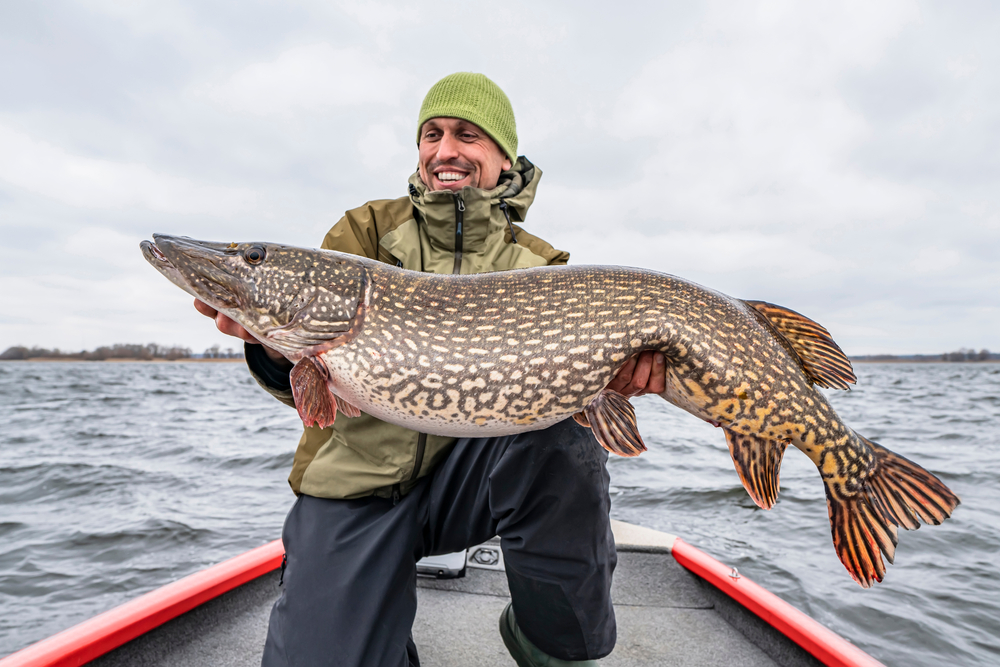
Where can you find pike?
Most states in the country are home to pike, which is either native or introduced there. However, the greatest concentration of pike can be found east of the Rocky Mountains.
New York, like Michigan, Minnesota, and Wisconsin, is a great pike state because of its proximity to the Great Lakes.
In reservoirs in the Dakotas and Colorado and Alaska, pike fishing is excellent. The largest pike can be found in the wilderness waters of Canada’s provinces, where fishing pressure is lowest.
Ontario is a great place to find huge pikes in Canada. A common catch is a 40-inch or larger pike in many of Ontario’s secluded waters, where giant northerners are the norm.
Lac Seul is one of Ontario’s best pike lakes, with anglers catching fish up to 40 inches in length regularly.
Eagle and Red lakes are also known for producing prize pike.
How many pike species are there?
The genus Esox presently has seven known species. Pike, American pickerel, chain pickerel, as well as the Muskellunge are all included in this group.
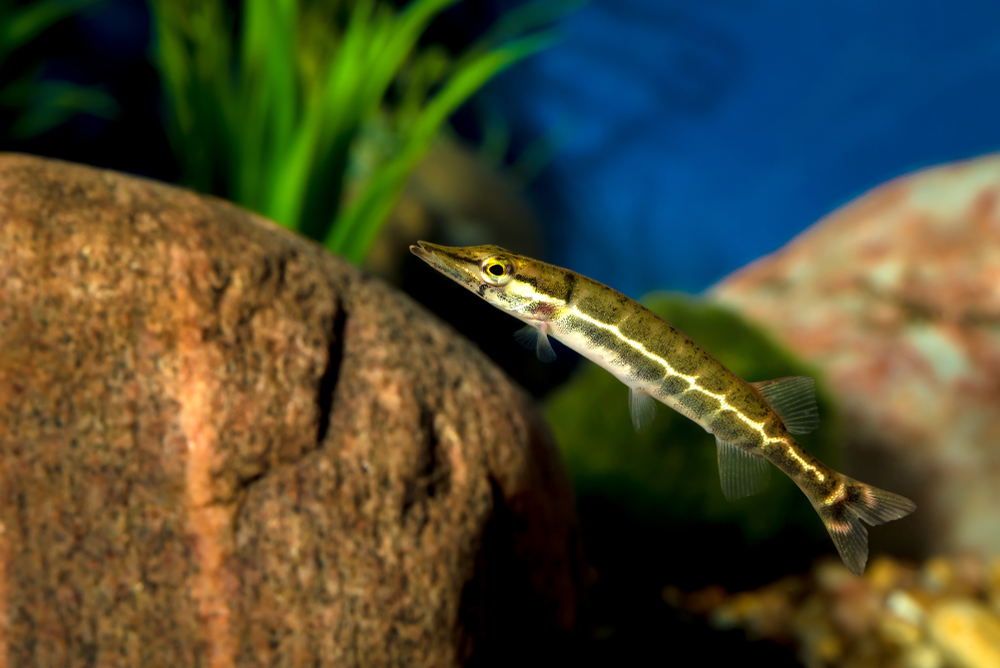
The following are the four most common pike species:
- An extremely popular game fish in the Midwest and Alaska, the northern pike is native to Europe, northern Asia, and North America. That’s why it’s sometimes considered a problem for native fish populations in other regions of the world, where it’s widely popular.
- The Southern Pike is the southernmost species of pike, as its name implies. As far south as Italy, southern France, as well as Switzerland, it can be found in abundance.
- A native of the Amur River system in East Asia, the black-spotted pike is known by many other names, including the Amur Pike.
- The Aquitanian Pike is a newly discovered species from France’s southwest region. It was only discovered in 2014, so little is understood about it.
What does the pike look like?
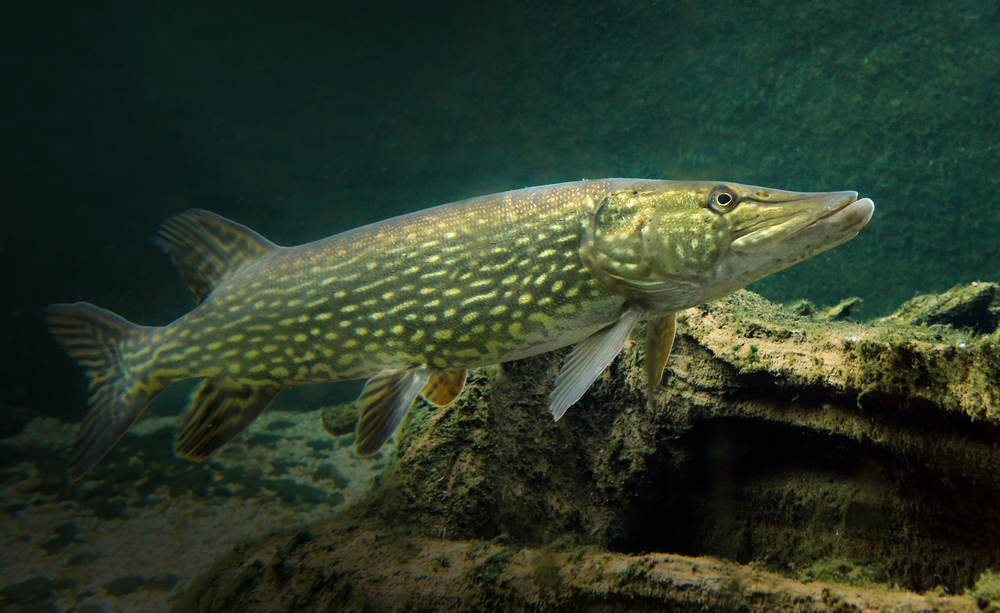
Pike have head, stomach, and dorsal fins (one on each side) near their tails.
Blue-gray, yellow-green, or almost pinkish-red hues cover the fish’s microscopic scales, which appear lighter as they get closer to the bottom.
There’s little doubt that the muskellunge is the largest of its kind. At 48 inches and 36 pounds, the average member of this species is massive (though specimens up to 70 pounds have been documented).
If you’re looking for a more common northern pike, you should expect it to be between 18 and 20 inches long and weigh between a few pounds and a few kilograms.
A 55-pound giant northern pike from Lake Greffern in Germany in 1986 was the largest fish ever caught.
What are pike’s population and habitat?
Freshwater rivers and lakes in the Northern Hemisphere are home to the northern pike. The largest concentration of pike is found in North America, namely Canada and the US.
Pike can survive at surprising depths.
Despite human overfishing, the overall health of this species is superb. The four species listed on the IUCN Red List are of the least concern to conservation efforts.
What are the pike’s predators and prey?

Although humans are the only known natural predators of the adult pike, otters, aquatic birds, and other fish enjoy the eggs and immature fish as a good lunch.
In its role as a top predator, the adult pike waits patiently in the weeds for prey to approach before snatching them up with its razor-sharp teeth.
Insects, isopods, and tiny fish are the primary foods of this species, although larger ones also eat aquatic birds, frogs, and small mammals.
As a cannibalistic fish, the northern pike has no problem devouring other members of its species.
How do pike breed and what is the average life expectancy?
Fish begin swimming upstream or closer to the coast during late winter or early spring, which is when the pike’s spawning season starts.
Species’ mating habits are slightly different. The male northern pike, for example, can nudge the female’s head to get her to release eggs.
For the eggs to be fertilized, the male releases his sperm.
A few weeks after the fertilized eggs are laid, the juvenile pike (also referred to as jacks) will hatch.
They will attach themselves to weeds and eat the yolk sack while they are still unable to eat more solid food since. They are very vulnerable in this stage.
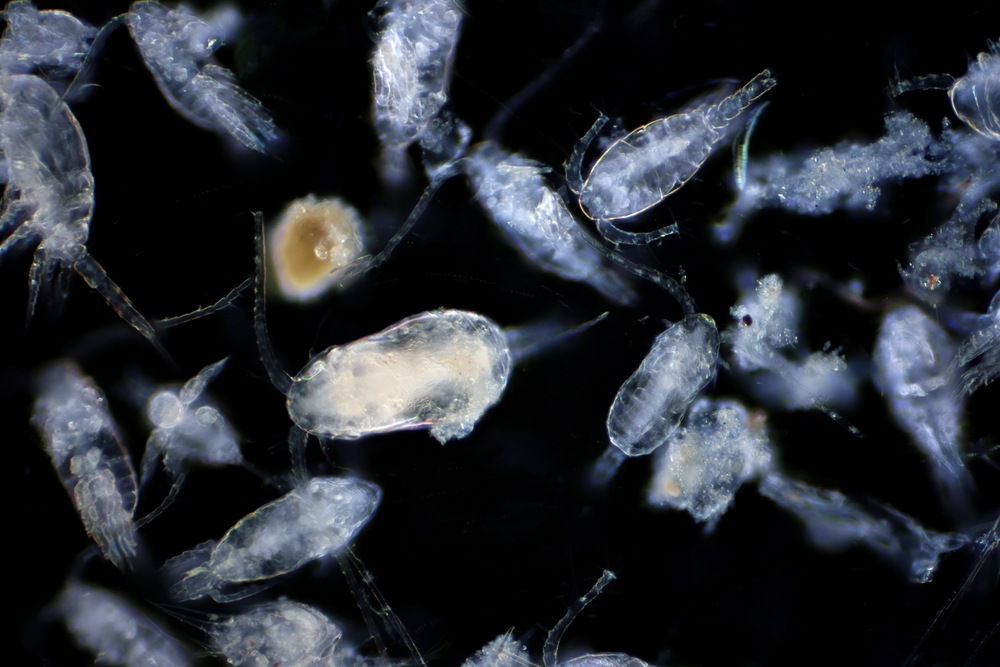
If a fish has developed enough teeth to eat zooplankton (small aquatic organisms), it will eventually move on to larger prey as it matures.
During the spawning season, a single female pike can generate thousands of eggs. As a result, many of these young animals have no defenses and are anticipated to die from predation during the first few months of life.
A northern pike can live for 10 to 15 years in the wild if it matures into an adult. The longest known lifespan is 26 years, according to the most recent research.
How popular is the pike fish?
One of the most popular species for pleasure and commercial fishing is the pike. It is rarely caught in large enough numbers to put a strain on the local population.
It also has a hard time adapting to man-made fisheries. Lone fishermen are more likely to catch it in fewer numbers.
The pike can be caught with dead bait, live bait, or lure fishing. Due to its strong teeth, it is important to handle the fish with care to avoid getting bitten.
Do pike attack humans?
Despite its viciousness, there are extremely few reports of pike assaults on people. When it comes to fighting with a species much larger than itself, the pike probably has little interest in it.
In most circumstances, the pike prefers to flee.
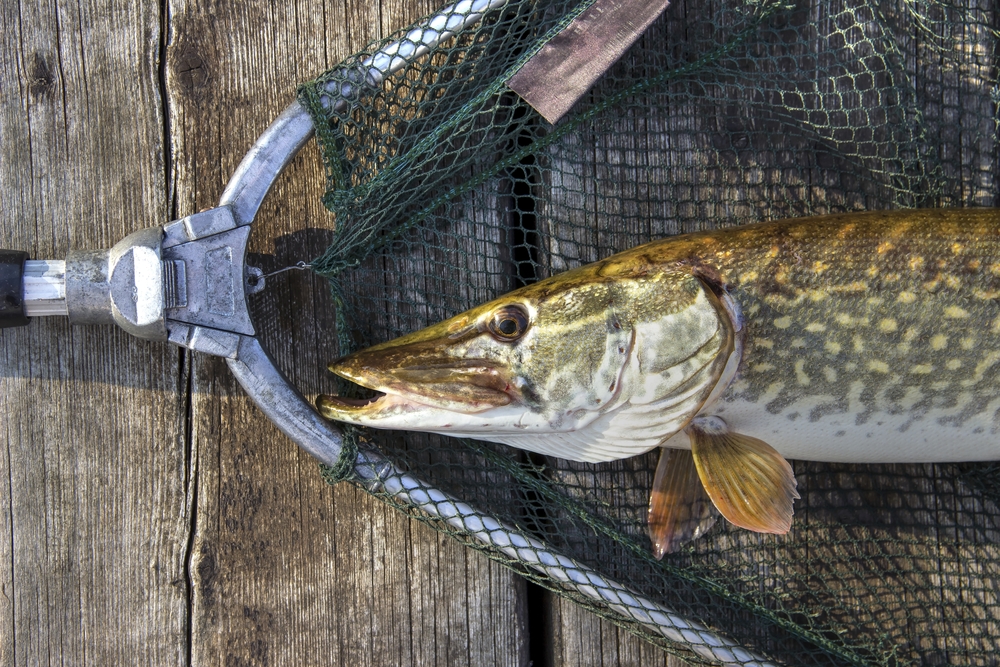
Are pike healthy to eat?
Pike flesh is a good source of protein and healthy lipids. It is a good source of omega-3 fatty acids, but not as much as certain other cold-water fish, such as cod.
Pike has white, flaky meat with a watery flavor. The meat is abundant in protein and healthy fats no matter how it is cooked.
The microscopic bones in the flesh, on the other hand, can make this fish a real pain to chew.
Before using it for cooking, make sure it’s thoroughly cleaned.
Do fishermen throw the pike back into the water?
Despite its reputation as a “sporting” fish, some fishermen choose to release their pike catches because of the fish’s bony meat, which is attributed to the fish’s prominent “Y-bones”.
Despite its moderate flavor, the white and mild-tasting flesh of pikes has a long-standing culinary tradition in Europe and parts of North America.
Fishing towns where pike is a popular cuisine place high importance on the skills of filleters to remove the fillets’ bones with minimal loss of flesh (called de-boning).
Leaving the “y-bones” in while filleting pike leaves some of the fish’s flesh intact, but it also avoids the often arduous “de-boning” process.
Filleting large fish is significantly easier than deboning smaller fish, which are commonly processed into forcemeat and used in dishes like quenelles and fish mousses.
How long have people been eating pike?
Cooking pike dates back as far as the Romans, according to archaeological evidence. It’s stated that fishing for pike is a lot of fun because of the fish’s ferocious attacks and impressive aerial gymnastics.
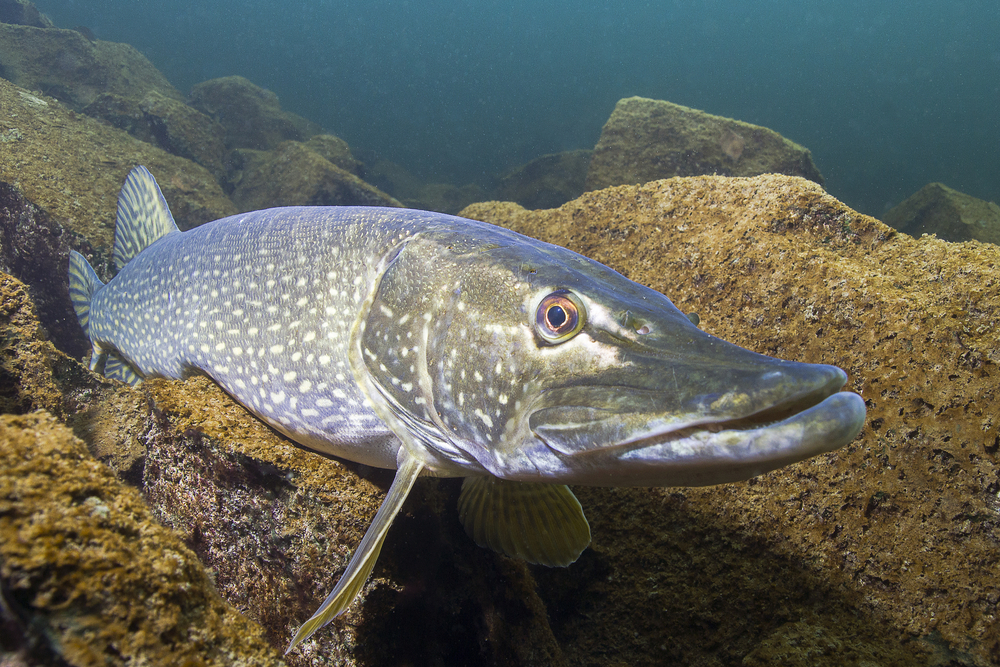
Pike are some of the largest freshwater game fish in North America.
Are there restrictions on pike?
Laws have been imposed in several areas to prevent the spread of northern pike outside of their native range because of their abundance and predatory behavior.
As an example, anglers in California are mandated by law to remove the pike’s head after catching it.
Fishing enthusiasts have illegally brought pike into south-central Alaska, where they are not native. In most sections of south-central Alaska, there is no limit
Some managers of fisheries believe that pike poses a danger to native wild salmon populations.
Is pike a common sportfish?
Specifically in the United Kingdom and Ireland, the pike is prized as a sport fish and returned to the water to ensure the survival of the sport and the sustainability of a fishery.
Since 1977, the Pike Anglers Club has worked to protect pike populations.
They argue that the removal of large fish from waterways can result in an overpopulation of smaller fish.
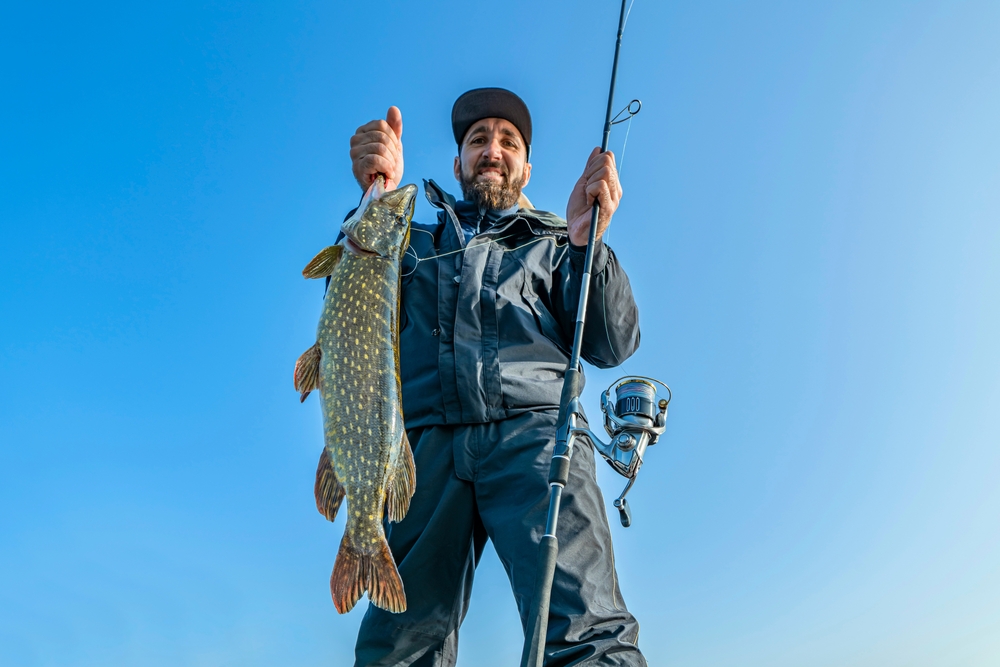
They also want to ensure that the sportfishing industry and the environment are not harmed by the continued removal of pike.

